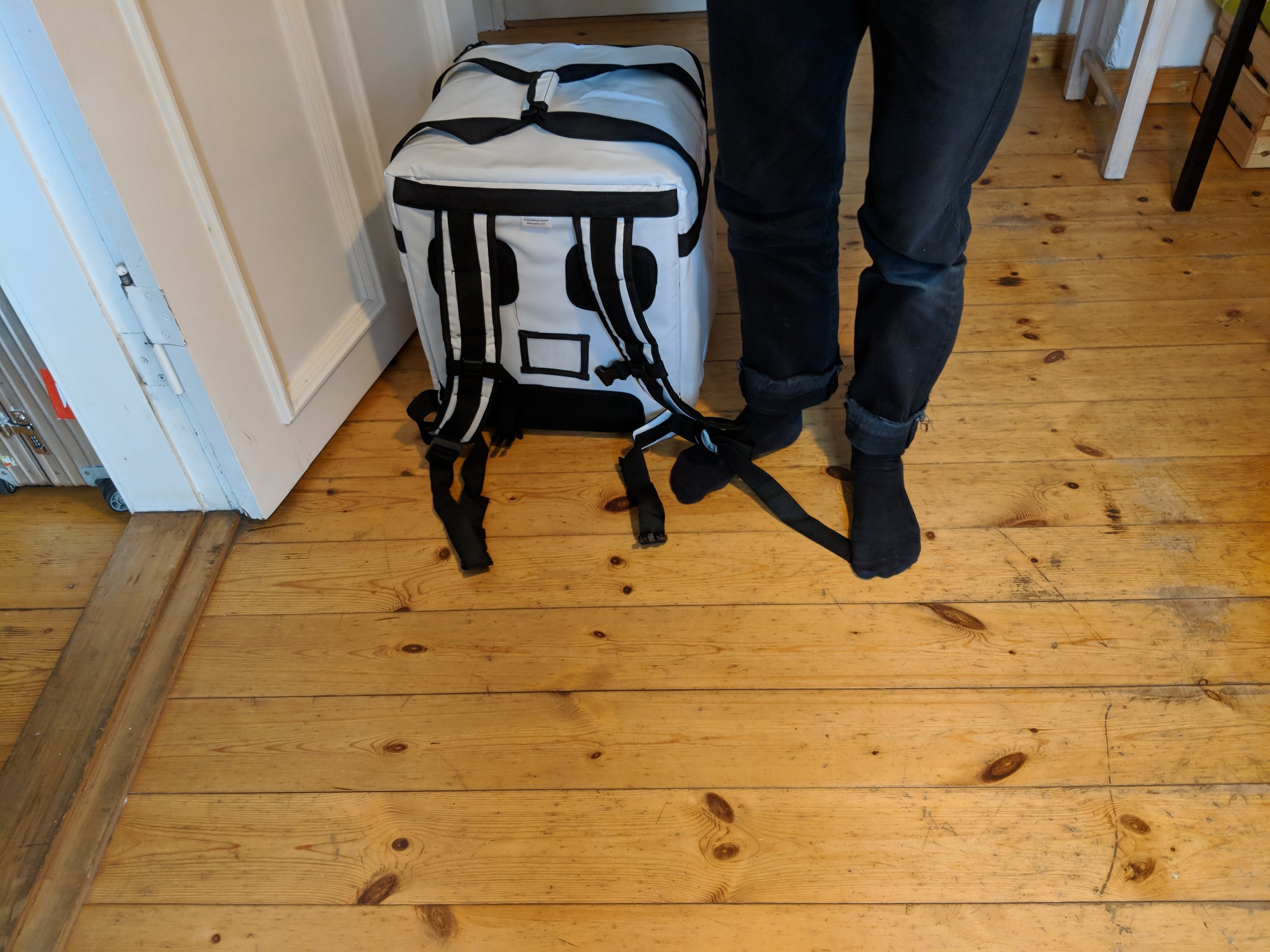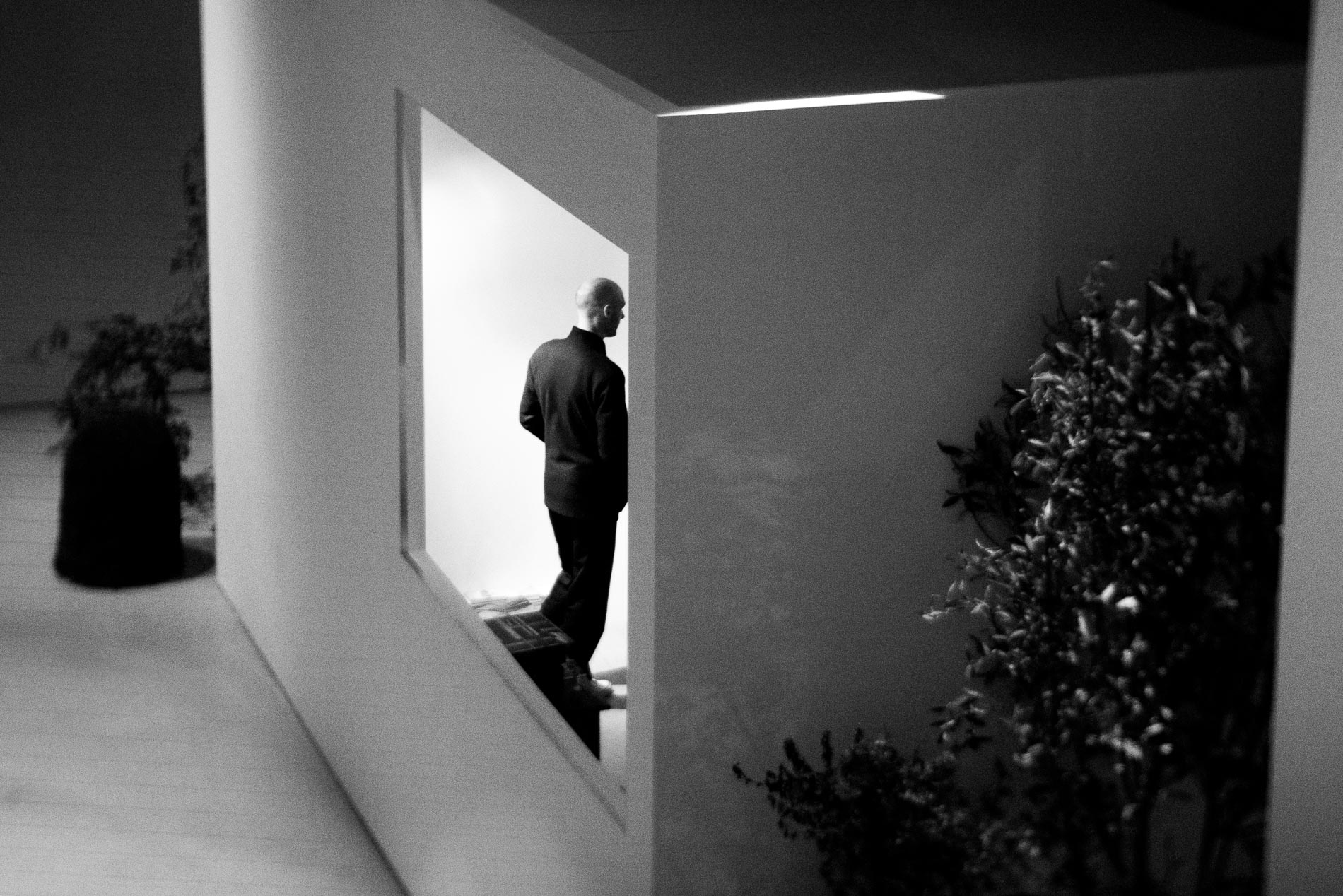Noise music visualized: Ryoji Ikeda

Playfully synaesthetic. Ryoji Ikeda is a Japanese Composer and a Visual artist. A symbiosis like no other in the contemporary art world has formed between his two crafts, audio and visual experiences that are just as complete on their own.
When you think about the universe, it's too big, too large. Beyond your imagination. But everybody knows that this exists.
(Ryoji Ikeda, in his interview with ABC News Australia)
Image and Sound composer from Japan, Ryoji Ikeda is composing tonal sound and landscapes. He has managed to develop his own language which translates successfully from visual to sonic and vice versa, which is what makes him highly admired and considered to be one of the best in his ability to work within the audio visual realm of the contemporary world. If I had to describe this language, I would describe it as structuralized abstraction.
Ryoji is fascinated with various representations of infinity in his work. Infinity is a subject matter that draws many of the contemporary artists to it, however, the way Ryoji gives it visual and audio form is outstanding. His visual installations look balanced and have a digestible sense of rhythm. They look scientific and full of integrity, without seeming unimaginative. He manages not to control or direct the viewer in any way, despite the fact that his work is highly structured. To the viewer, it is highly individual and can easily be interpreted in many ways.
Dataplex CD’s and Japanoise
Before I knew of Ryoji as a visual artist, I used to listen to Dataplex and collect his various CDs. Experimental in nature, with a lot of noise and ambiance, I was drawn towards his music but never really explored the person behind the masterpieces such as data.matrix, from his 2005 album, “Dataplex”. The genre of music Ryoji Ikeda’s works often falls under is “Japanoise”. Unique and not like anything out there, this genre is very calming and oddly cathartic for many. Because of its experimental nature, Japanoise is not easily welcomed, and many people will not find the beauty of it in the first listen. However, once past the entry point, Ryoji Ikeda, and many others, become very calming, temperate and oddly cathartic. When exposed to Japanoise for the first time, the listener is almost always confronted with new listening conditions. Paying attention to space, rhythm, imagery, and having to heightened their senses, and beating the patterns of listening that one is used to having. e.g. Our brain always tries a beat or a pattern, which noise music challenges, making components of music more prominent and enjoyable. Because I always associated Ryoji Ikeda’s work to fall under this umbrella of Japanoise music, I never really explored Ryoji personally as an artist, or look at his background story.
π, e, ø, a solo exhibition by Ryoji Ikeda, organised with Olivier Renaud-Clement at Almine Rech Gallery.
While living in London, I saw an advert for his solo exhibition at the Almine Rech gallery, located in the heart of Mayfair. Curious, and not sure if Ryoji’s music will be welcomed, or understood by the London art scene I decide to visit during the opening week. The title of the exhibition was “π, e, ø,”. This already set the tone for the structured exploration of infinity using mathematics, a form which to Ryoji is the purest in terms of linguistics and well aesthetics.
Ryoji Ikeda’s exhibition title π, e, ø stands for three important mathematical constants;
π (pi, the ratio of a circle’s circumference to its diameter)
e (the base of the natural logarithm)
ø (phi, golden ratio: a+b/a = a/b), all of which are infinite.
He tries to tackle the concept of infinity in a visual way, using mathematical language to aid his visual representation. Ryoji Ikeda managed to develop his own data-driven language. Because of this, Ryoji Ikeda as a visual artists looks exactly like Ryoji Ikeda the composer.
π, e, ø - in photos










The exhibit at Almine Rech Gallery was not his one-off immersive installation, but rather an overview of his work;- a retrospective. It was enjoyable precisely for this reason. It gave the viewer the ability to look at Ryojis work, how they have evolved and explored the incredible consistency of his language. As Ryoji Ikeda’s work is usually an immersive installation, this was a great opportunity to take a step back and take on a role of passive observer, rather than be sucked into his orchestrated world of the mathematical universe. This was also, in my opinion, to introduce the London art scene to the works of Ryoji Ikeda in an accessible and easily digestible way.





